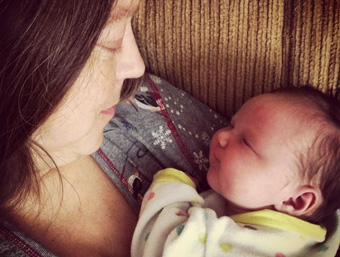The largest tubal reversal pregnancy study has been released by Chapel Hill Tubal Reversal Center.
Chapel Hill Tubal Reversal Center has just released the largest and most definitive tubal reversal study completed to date. With the results of approximately 10,000 patients undergoing tubal reversal surgery at Chapel Hill Tubal Reversal Center, the Tubal Reversal Pregnancy Study Report 2011 has proven the great success of tubal ligation reversal surgery for restoring a woman’s fertility after her tubes have been tied. Couples travel from all over the United States and from around the world seeking this surgery to have fertility restored following a tubal ligation (tubes tied).
This report is based on a prospective study of 9,935 women who had tubal reversal surgery from January 2001 through December 2011 at Chapel Hill Tubal Reversal Center located in Chapel Hill, North Carolina. When tubal reversal patients become pregnant they are asked to contact the center and fill out a Pregnancy Report Form. All of the women are then followed up with phone calls and electronic mails by a tubal reversal nurse to verify the outcome of each pregnancy. All information is collected and added to the electronic database for further analysis.
The results of this study have prove that tubal reversal pregnancy success rates are far more successful than many realize. Not only is outpatient tubal reversal surgery less expensive than IVF, it also has a better success rate. Unfortunately, not enough couples wishing to become pregnant after tubal ligation are aware of this fact.
In this study the age of patients ranged from 20-51. As in previous studies from the center, younger women had better pregnancy success than older women. Another factor that plays a role in the success of tubal reversal is the type of tubal ligation that was originally performed. Those with clips and rings had the highest pregnancy success rates. Following in order were ligation/resection, coagulation and other/unknown.
Tubal reversal success also correlates with the length of healthy fallopian tube following reversal surgery. The longer the fallopian tubes the higher the pregnancy success rate. The average length of fallopian tubes before a tubal ligation is about 10 cm or 4 inches. As indicated in the pregnancy report, 83% of women with tubal lengths of 7.5 cm or longer became pregnant. As tubal lengths decreased the pregnancy rate declined. Although this finding is in accordance with past study findings, even women with the shortest tubes (less than 2.5 cm) became pregnant.
Chapel Hill Tubal Reversal Center is an outpatient facility exclusively for tubal ligation reversal. Offering low cost, outpatient tubal reversal surgery has helped couples around the globe become parents in the most natural way following tubal ligation.
For more information on the Tubal Reversal Pregnancy Study 2011 visit:
- Tubal Reversal Pregnancy Report 2011 – Overview
- Study Methodology
- Where Patients Come From
- Patients Ages and Tubal Ligation Procedures
- Pregnancies by Age and Tubal Ligation Procedures
- Pregnancies by Tubal Lengths
- Births, Miscarriages, Ectopic Pregnancies
- Tubal Reversal Pregnancy Statistics – What You Should Know








